Welcome to This Date in Aviation History, getting of you caught up on milestones, important historical events and people in aviation from March 28 through March 31.
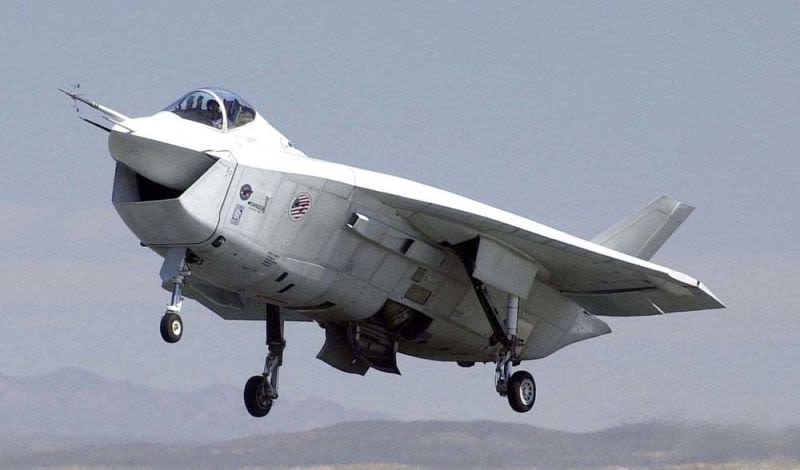
March 29, 2001 – The first flight of the X-32B Joint Strike Fighter. In 1960, both the US Air Force and US Navy were looking to develop a new large tactical fighter/bomber and, in an effort to dave money, Defense Secretary Robert McNamara dictated that the two services must work together to find one aircraft that could serve both branches. The result of that directive was the Tactical Fighter Experimental (TFX) program that led to the development of the General Dynamics F-111. But it soon became clear that the two services had very different missions in mind for the aircraft, and the Navy eventually dropped out of the program to develop the Grumman F-14 Tomcat instead. The moral of that story is that, no matter how hard you try, it is extraordinarily difficult to make a single aircraft that can fulfill such different and specific roles. But that didn’t stop the US Department of Defense from trying the same thing again, but this time, with a fighter for all three fixed-wing services (the last to do that successfully was the McDonnell Douglas F-4 Phantom II).

Through the merger of various ongoing aircraft procurement programs, the Joint Strike Fighter (JSF) program was launched in 1993 to develop a single basic airframe that could fulfill the strike, fighter, and ground attack roles. It would also have to be capable of short takeoff and vertical landing (STOVL), and employ stealth technology. Boeing and Lockheed Martin were chosen to build prototypes, which became the X-32 and X-35 respectively. Though both aircraft shared the same mission parameters, the two companies chose to solve the design challenges in very different ways, and they were only permitted to use the money provided by the DOD. Boeing’s goal was to create three different versions of the same fighter with as many common parts as possible. Unlike Lockheed Martin, which designed a complex, shaft-driven fan for the STOVL variant of the X-35, Boeing opted for using vectored thrust coming from an engine placed well forward in the fuselage. This engine placement, along with its pronounced chin intake, is what gave the X-32 its ungainly appearance. But this large intake, with the engine almost directly behind it, had the negative impact of exposing the turbine blades to radar detection, a problem that Boeing planned to mitigate but never fully developed. Boeing also chose a single piece, carbon fiber composite delta wing that was capable of holding 20,000 pounds of fuel.
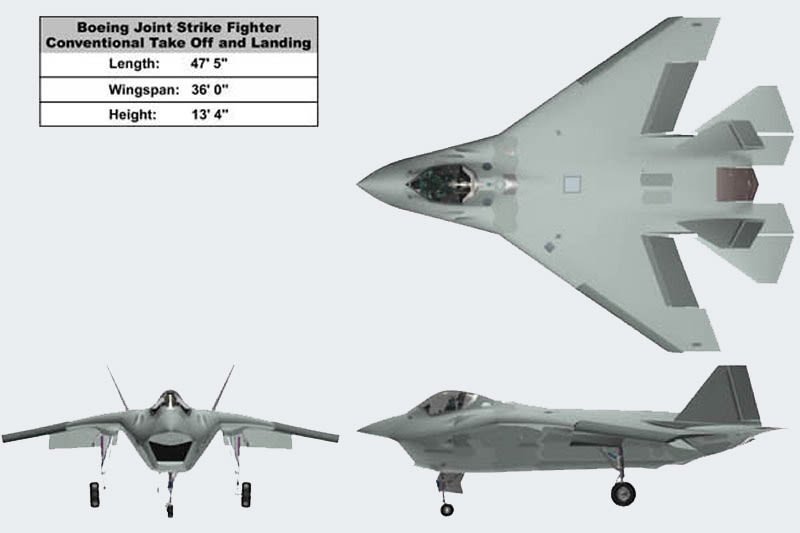
However, eight months into the construction of the prototype, the Navy changed their requirements, and Boeing was forced to redesign the tail of the aircraft. Since there was no time to work those changes into the prototypes before testing began, Boeing was forced to use two different configurations to prove their technology. The X-32A was the conventional takeoff aircraft for the Air Force and Navy (CTOL), while the X-32B was the STOVL demonstrator for the Marine Corps. The first flight of the X-32A took place on September 18, 2000, followed six months later by the X-32B. The X-32B was powered by a Pratt & Whitney F119 afterburning turbofan which gave the fighter a top speed Mach 1.6 in level flight. To transition to vertical landing, a butterfly valve redirected the jet output to vectoring nozzles, and attitude was controlled by ducted nozzles on the wingtips, with others fore and aft on the fuselage. This configuration meant that the X-32B was powered by a direct lift engine, similar to the McDonnell Douglas AV-8B Harrier II. While this arrangement was significantly less complex than the system derived by Lockheed Martin, it had the drawback of being less powerful, and not capable of carrying the same loads. In fact, Boeing had to remove panels to reduce weight for the STOVL test flights.
After the flyoff competition, the X-35 was chosen over the X-32 on October 26, 2001, and that aircraft went on to become the F-35 Lightning II, an aircraft that saw significant problems and cost overruns in its development. We will never know if the Boeing aircraft would have been any easier or cheaper to develop. Though Boeing lost the billions of dollars they stood to gain had they won the contract, the X-32 still provided invaluable research data and experience with advanced designs and materials. Both the X-32A and X-32B have been preserved, with the former awaiting restoration at the National Museum of the United States Air Force, and the latter on display at the Patuxent River Naval Air Museum.
Short Takeoff
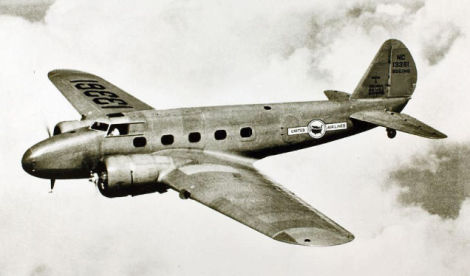
March 28, 1931 – United Air Lines is formed by the combination of Boeing Air Transport (previously merged with Pratt & Whitney to create United Aircraft and Transport Corporation), National Air Transport, Varney Airlines, and Pacific Air Transport. United began transcontinental flights in 1933 flying the Boeing Model 247, the first all-metal airliner. Today, United is one of the world’s largest airlines with approximately 83,000 employees, and the third largest when measured by scheduled passenger-miles flown and fleet size, with service to 342 destinations in 60 countries. In 2010, United merged with Continental, and the company changed its name to United Continental Holdings to reflect the merger.
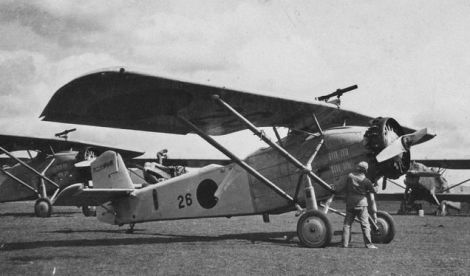
March 28, 1931 – The first flight of the Mitsubishi 2MR, a parasol wing reconnaissance monoplane designed for the Imperial Japanese Army and the first Japanese military aircraft to be both designed and built in Japan. All four prototypes took their maiden flight on the same date, and Mitsubishi eventually produced 230 aircraft. The 2MR8 saw service in Manchuria beginning in 1933, and were also used by the Chinese Air Force during the Second Sino-Japanese War. The 2MR was used primarily as a trainer into the late 1930s, but was retired before the outbreak of WWII.
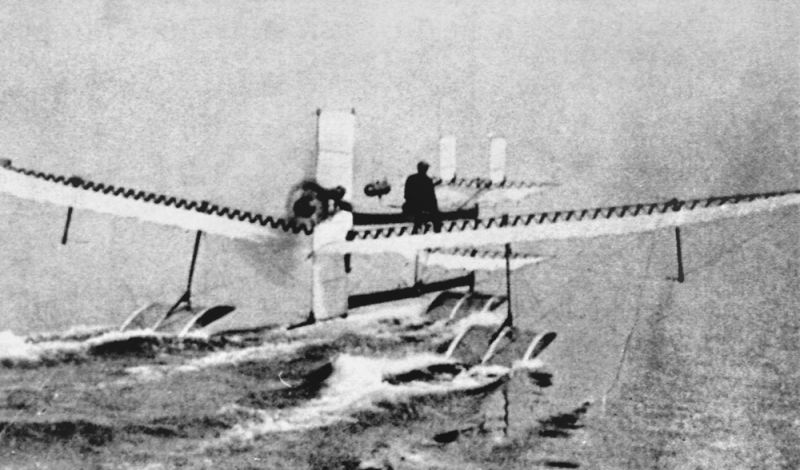
March 28, 1910 – French aviator and inventor Henri Fabre performs the first flight to take off from the water. The son of a shipbuilding family, Fabre joined his interests in aviation with his family’s knowledge of boatbuilding to create the Fabre Hydravion, a canard aircraft of Fabre’s own design with a pusher propeller turned by a Gnome Omega radial engine. Though Fabre had no flying experience, he successfully piloted the maiden flight, plus two others that day. By week’s end, he had managed flights of 3.5 miles before the aircraft was heavily damaged in a crash. Though Fabre built no more aircraft, his design influenced French aviation pioneers Charles and Gabriel Voisin, and Gaston and René Caudron, and he also provided floats for Caudron’s and Voisin’s early attempts at seaplane development.
March 29, 1960 – The first flight of the Tupolev Tu-124, a twin engine airliner developed from the Tupolev Tu-104 and designed to meet Aeroflot’s requirement for a new regional airliner to replace the Ilyushin Il-14. The Tu-124 was powered by a pair of Soloviev D-20P turbofans mounted in the wing roots that were more efficient than the turbojets of the Tu-104, and it could carry up to 56 passengers at a cruising speed of 540 mph with a range of 1,3oo miles. The Tu-124 was introduced in 1962, and was exported to numerous Eastern Bloc countries along with India and Iraq. A total of 164 were produced, and it was finally withdrawn from Russian military service in 1992.
March 30, 2006 – Marcos Pontes becomes the first Brazilian astronaut to travel to space. Pontes was both the first Brazilian and the first Portugese-speaking astronaut when he flew to the International Space Station (ISS) on board the Russian Soyuz TMA-8. Trained by NASA and originally slated to go to space on board the Space Shuttle, Pontes transferred to the Russian space program due to delays with the Shuttle program. He spent seven days aboard the ISS conducting experiments before returning to Earth with the departing crew of Expedition 12 on board Soyuz TMA-7. Pontes’ flight coincided with celebrations around the 100th anniversary of the first flight by Brazilian aviation pioneer Alberto Santos-Dumont in 1906.
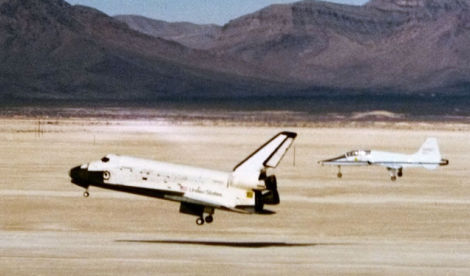
March 30, 1982 – Space Shuttle Columbia lands at White Sands, New Mexico. Following STS-3, the third mission of the Space Shuttle Program, Columbia landed on Northrop Strip at White Sands (now called White Sands Space Harbor) after an eight-day mission to test Shuttle endurance and to perform scientific experiments. Columbia was originally slated to land at Edwards Air Force Base in California, but heavy rains had flooded the landing site and forced the switch to White Sands. The landing site at the Kennedy Space Center (KSC) in Florida was also available, but the Shuttle pilots opted for White Sands since they had trained there and were more familiar with the location. It was the only time in the Shuttle Program that a Shuttle landed at a site other than Edwards or KSC.
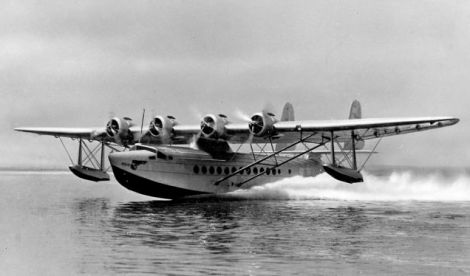
March 30, 1934 – The first flight of the Sikorsky S-42. While Igor Sikorsky is perhaps best known for his pioneering work with helicopters, he got his start in aviation by building large fixed-wing aircraft, particularly flying boats. The S-42 was developed to meet a requirement by Pan Am for a long-range flying boat, and included many innovative features such as wing flaps and variable-pitch propellers. The S-42 was powered by four Pratt & Whitney R-1690 Hornetradial engines and set numerous payload records during testing. In service, the S-42 accommodated up to 37 passengers or 14 sleeper berths, and a total of 10 were produced.
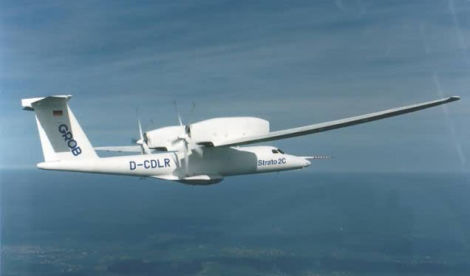
March 31, 1995 – The first flight of the Grob Strato 2C, an experimental high-altitude research aircraft built by Germany. The Strato 2C was powered by two turbocharged piston engines and had a service ceiling of almost 79,000 feet. With a wingspan of just over 185 feet, it was designed to remain aloft for up to 48 hours. In 1995, the Strato 2C set a world record for altitude by a piston-powered aircraft of 60,897 feet, but cost overruns eventually led to the cancellation of the project in 1996.
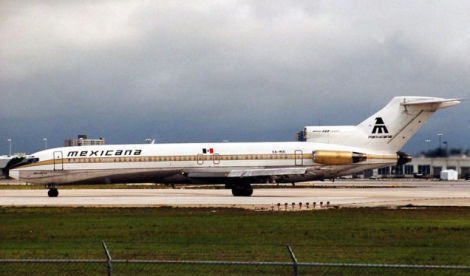
March 31, 1986 – The crash of Mexicana Flight 940. Mexicana 940 was a scheduled flight from from Mexico City to Los Angeles via Puerto Vallarta when an onboard explosion and fire caused the plane to crash in the Sierra Madre Occidental mountain range as the crew attempted a return to Mexico City. Speculation at first focused on terrorism, but the investigation found that ground crews had inflated a tire with compressed air rather than nitrogen, which caused the tire to explode at altitude. The explosion ruptured a fuel line and led to a fire which brought down the airliner. The crash killed all 167 passengers and crew, and is the deadliest air disaster on Mexican soil and the worst crash involving a Boeing 727.

March 31, 1945 – Luftwaffe pilot Hans Fey deserts the Luftwaffe and delivers a Messerschmitt Me 262 jet fighter to the Allies. Fey was a test pilot and instructor who was tasked with flying one of 22 new Me 262s from Schwabish-Hall to Neuberg an der Donau for safe keeping late in the war. Instead, Fey turned his fighter towards Frankfurt, where he landed and delivered the fighter to the Americans. The aircraft was then transported to the United States, where flight tests were carried out at Wright Field in Dayton, Ohio. However, during a test flight on August 20, 1946, an engine failure lead to the loss of the aircraft, though the American test pilot parachuted to safety. Tests of the Me 262 provided invaluable data on the development of future Allied jet fighters.
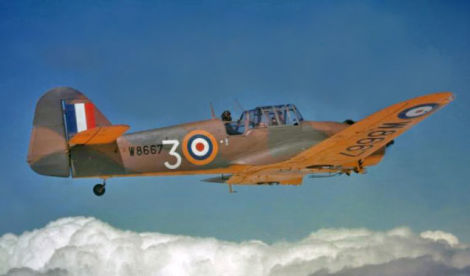
March 31, 1939 – The first flight of the Miles Master, a two-seat trainer adopted by the Royal Air Force and Fleet Air Arm as an advanced trainer. The Master was developed from the earlier Miles M.9 Kestrel, and was adopted when the de Havilland Don turned out to be unacceptable. The Master was fast enough to give students an idea of what to expect in more powerful fighters like the Hawker Hurricane and Supermarine Spitfire, and also powerful enough to work as a glider tug. Some were even pressed into service as a fighter during the Battle of Britain. A total of 3,250 Masters were produced.
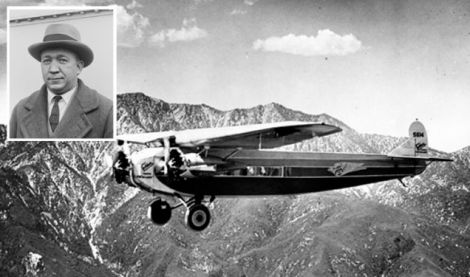
March 31, 1931 – The crash of TWA Flight 599, scheduled Fokker F.10 trimotor (NC999E) service from Kansas City, Missouri to Los Angeles, California. During the flight, the wooden laminate wing reportedly failed and the plane crashed near Bazaar, Kansas, killing all eight passengers and crew including famed University of Notre Dame football coach Knute Rockne. The death of such a prominent sporting figure almost brought about the demise of TWA, but it also spurred significant changes in air travel in the US. All Fokker trimotors were grounded for inspection, and the outcry for information about the investigation caused the Department of Commerce to halt its practice of keeping crash investigations secret. The crash also led to a call for all crashes to be publicized, which in turn led to higher safety standards in the airline industry.
Connecting Flights
If you enjoy these Aviation History posts, please let me know in the comments. You can find more posts about aviation history, aviators, and aviation oddities at Wingspan.

